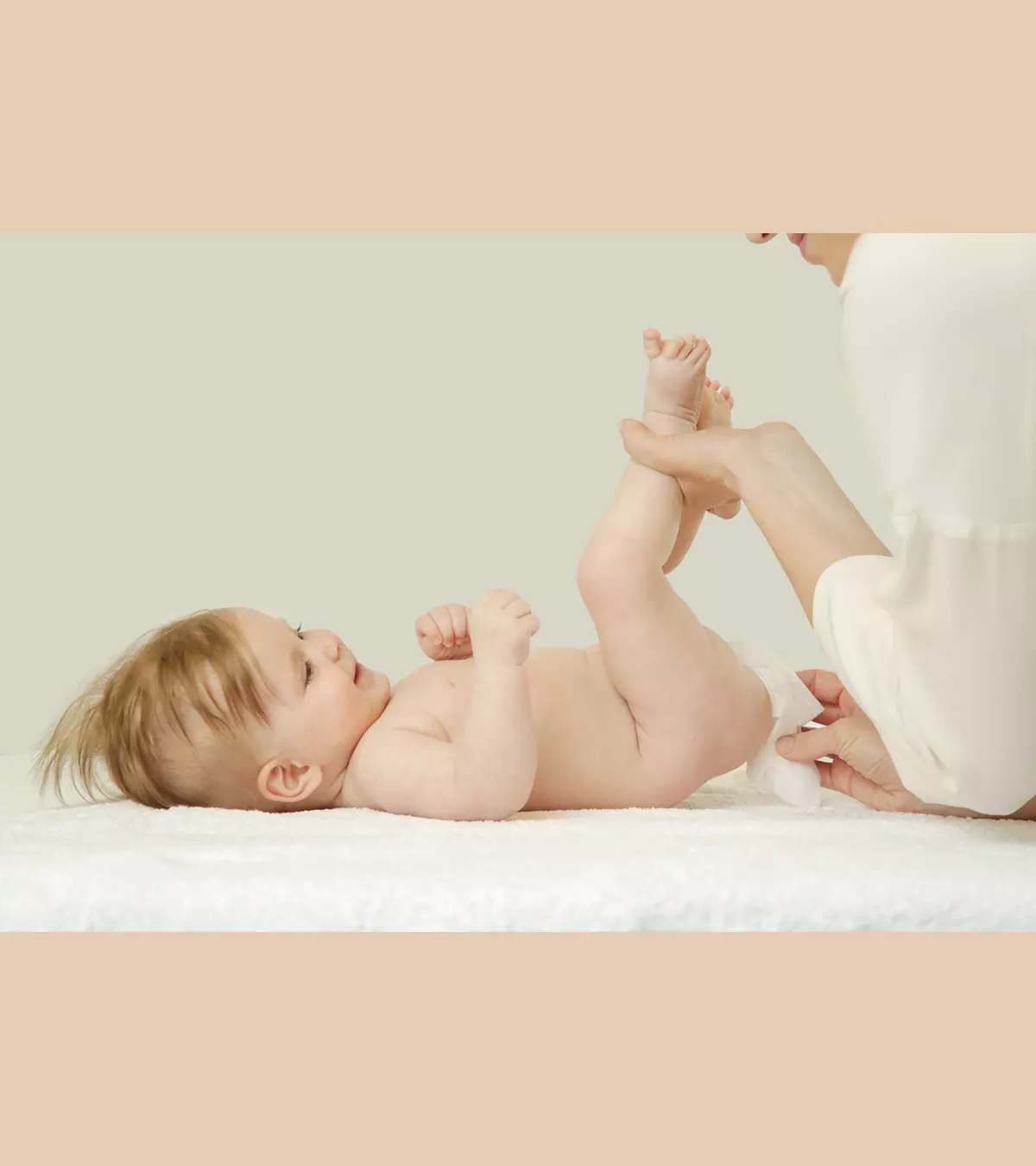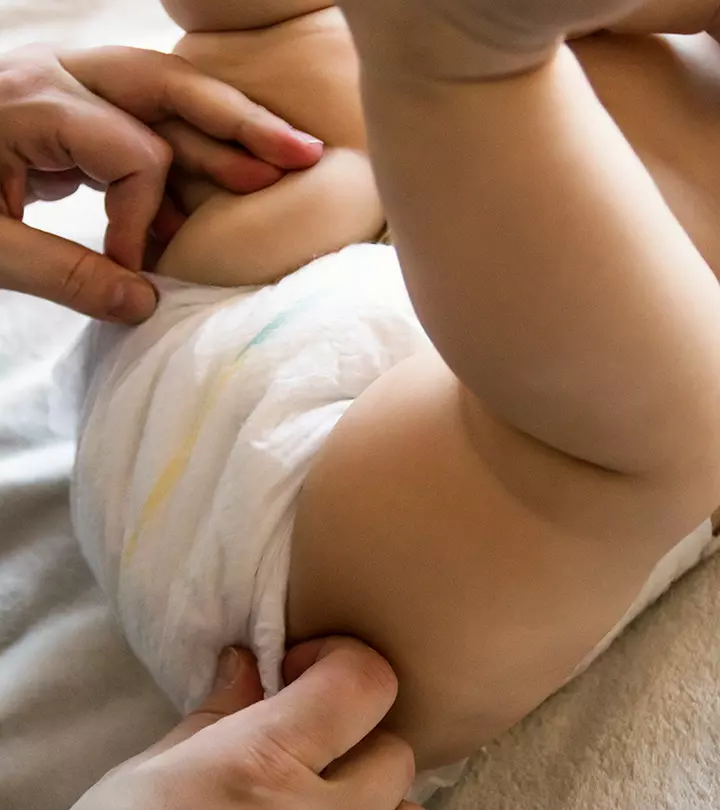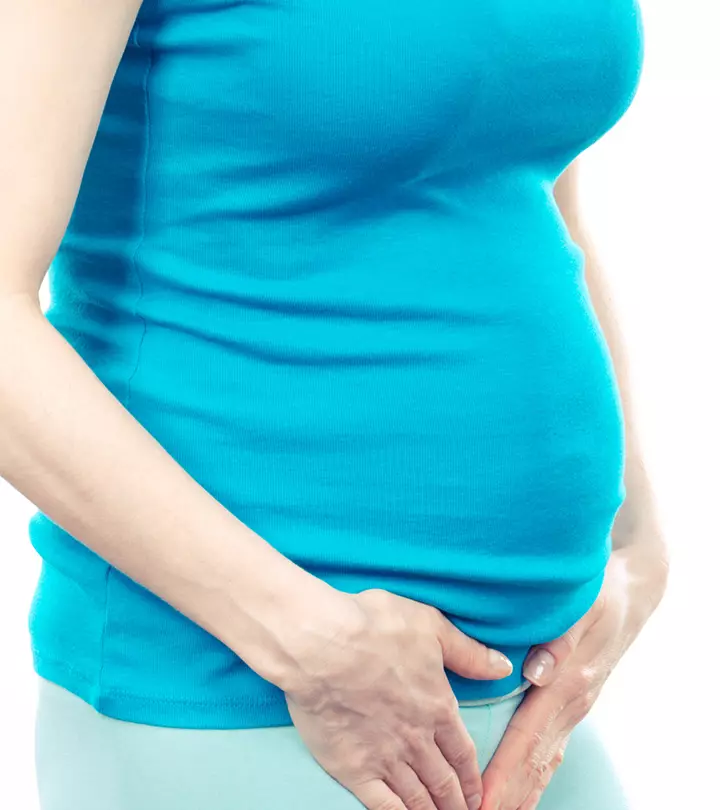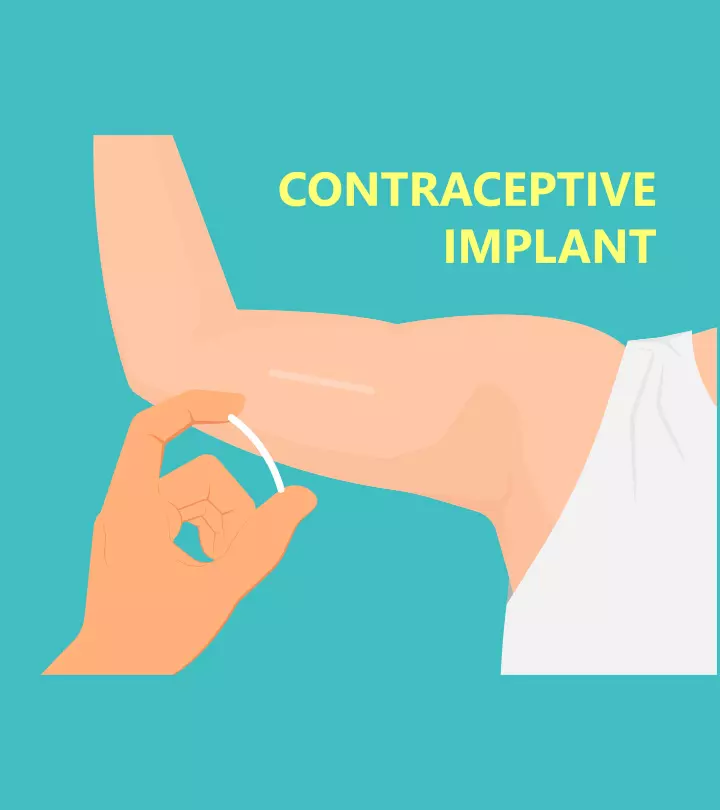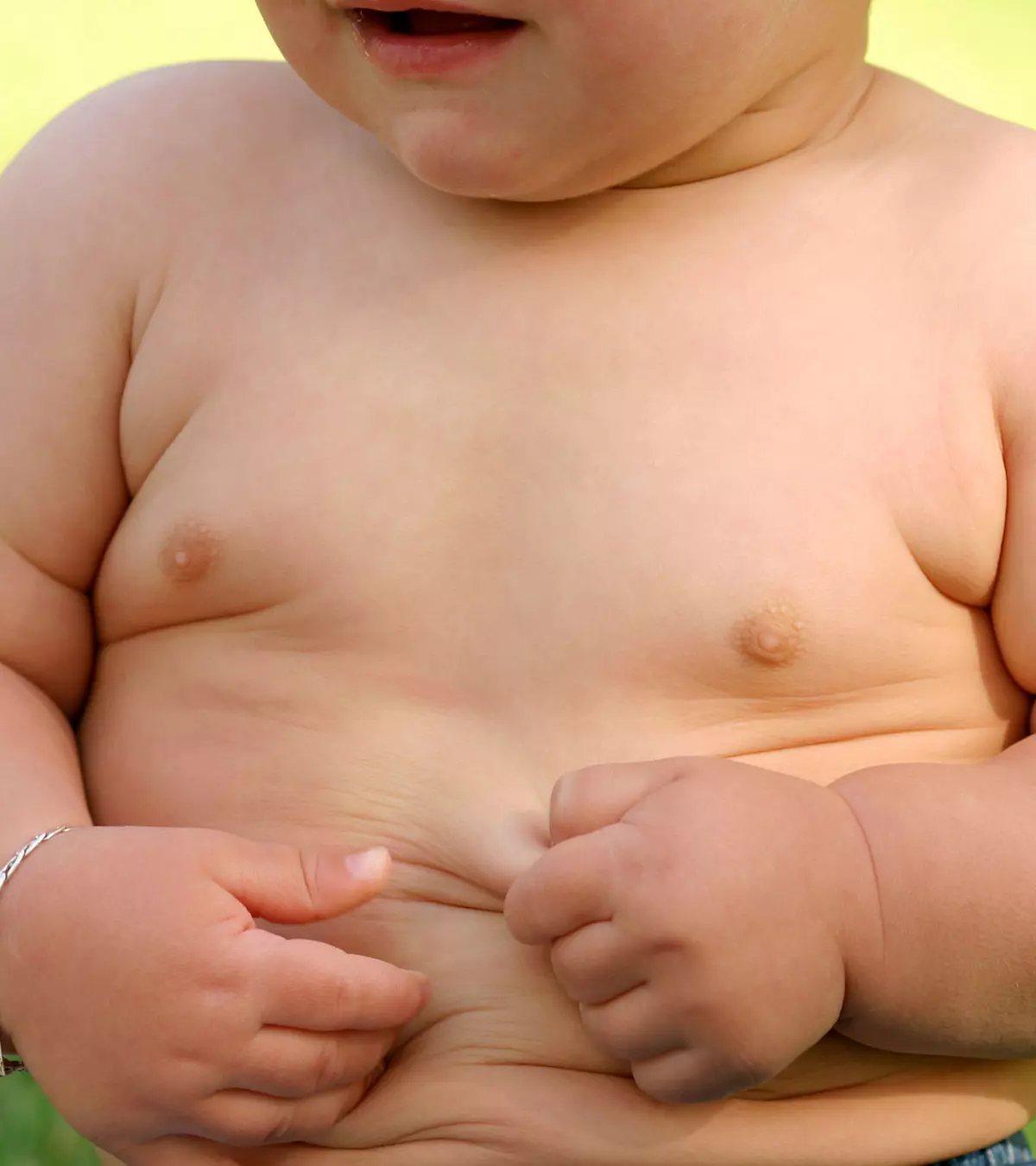
Image: iStock
Preterm babies who are ill may require additional care and support to survive after birth. Incubators for babies might be used based on how early the baby is born and how well their systems are developed. Most premature babies who need special care could be placed in incubators in a separate setup called the neonatal intensive care unit (NICU).

As a new parent, you may have several queries and concerns on the need and uses of incubators in babies. Read on to know more about the details regarding the use of incubators in babies in a NICU.
Key Pointers
- Incubators are used in the neonatal intensive care unit (NICU) to facilitate special care and support for premature babies.
- A baby could need an incubator due to several conditions, such as trouble in breathing, infections, jaundice, and surgeries after birth.
- Incubators are of different types, including open, closed, double-walled, and portable.
What Does An Incubator Do?

An incubator is an integral part of the NICU. The biomedical device appears like a box or a clear glass bassinet and helps in providing medical care to the newborn by providing an environment similiar to the mothers womb, keeping them warm and protecting them from allergens or environmental pathogens. Incubators are equipped with devices that provide the baby with a controlled environment by regulating the temperature, humidity, and oxygen. They also have hand-access ports with doors to meet the baby’s nursing or other medical requirements (1).
Incubators also tune out excess noise, which may cause sleep disruptions, unnecessary stress, or a rise in the baby’s blood pressure. Thus, an incubator helps eliminate extraneous stressors, such as temperature fluctuations and noise, and allows physicians to provide better healthcare to a baby.
Different Types Of Incubators
Depending on the babies’ needs, various types of incubators are used in neonatal intensive care units (2).
- Open incubator: It is also known as a radiant warmer or open-box incubator and is open from the top. The baby is usually placed on a flat surface with a heating element placed below or above the baby. The incubator is equipped with other devices, too. The infant warmer is generally used to maintain the temperature of the just born baby for a few hours. Since the incubator is open, the humidity control is not as good as in the closed incubator, nor is there protection from pathogens in the environment. Although this incubator allows more physical contact with the baby, it is not ideal for babies who require germ protection (3).
- Closed incubator: It keeps the baby completely enclosed within the incubator. The closed or closed-box incubator has hand-access ports that allow the caretakers to administer medicines and IVs when required. It provides better heat circulation and temperature control than an open incubator. Oxygen can be given easily through prongs or an oxygen hoodiA dome-shaped instrument that provides warm, humid oxygen inside. . In a closed incubator, the humidity and temperature can be controlled manually or through skin-based sensors. Minimal contact with the medical personnel and environment provides a sterile environment (3).

- Double-walled incubator: Some closed incubators feature dual walls to maximize heat and humidity retention. Like a closed incubator, a double-walled incubator also creates a more controlled and protected microenvironment for the baby (4).
- Servo-controlled incubator: It is a type of closed incubator that works on an electronic feedback system. It automatically controls the temperature and humidity based on the readings of the sensors attached to the baby’s skin. It is much more beneficial in providing a controlled environment to the baby (5).
- Portable incubator: This incubator is used to shift babies from one area, location, or hospital to another when needed. Portable incubators are usually smaller and equipped with a cardio-respiratory monitoriA device that monitors respiration during sleep. , pulse oximeteriAn instrument that measures the pulse rate and the oxygen levels in the blood. , mini ventilatoriA machine that helps a person breathe or breathes for them additional oxygen supply, and an IV pump. These incubators are designed to keep the baby warm and stable during transport, providing an ideal environment. They are useful in cases of transporting babies in remote areas to a hospital or from a basic health unit to a tertiary care hospital (6).
Why Do Some Babies Need An Incubator?
An incubator is used in conjunction with other equipment to ensure babies are in an ideal environment and continually monitored in an NICU. A baby may need an incubator for various reasons, such as those mentioned below (7) (8) (9).
- Premature birth: Infants born before 37 weeks of gestation period are called premature babies or preemies. Premature babies need incubation since they have trouble regulating their body temperature, usually due to the following reasons.
Adam, a father of three, narrates about her daughter, Flora’s, premature birth. He says, “Flora held out for a whole week when, on 22nd March, Ieva’s water broke, and almost exactly 24 hours later, she was born naturally and as healthily as could be expected… Both mother and baby were fine. Ieva (my wife) had lost a lot of blood but was recovering well. Flora was put onto a ventilator to breathe for her and was as well as could be expected in an incubator… At 25 weeks and three days, Flora was not fully developed, and we were in no uncertain terms informed that there was a long journey ahead.” His daughter, Flora, remained in the incubator for the next six weeks (i).”

- Inadequate keratinization: Preemies lack skin integrity, which results in high permeability of water. Usually, permeability drops in seven to ten days after birth. Therefore, it is important to maintain humidity to avoid heat loss and water loss through the baby’s skin.
- Low body fat: Preemies have no protective fat and can feel cold even at what might seem like a comfortable room temperature for babies.
- Breathing issues: Some newborns may have breathing difficulty due to underdeveloped lungs. As a result, their premature organs may not receive enough oxygen supply. There is deficiency of surfactantiA substance that reduces surface tension in the lungs' alveoli and prevents collapse during exhalation. important for maturation of lungs. The premature baby may go into respiratory depression. Such babies may require resuscitation (rarely) and may be placed on ventilation for breathing support and to achieve stabilization. Therefore, they may require cardio-respiratory monitoring within an incubator.
- Infection:Premature babies and babies with congenital problems usually have an underdeveloped immune system, making them more prone to infection. Thus, the use of an incubator could protect the baby from infectious agents until their immune function improves. A protected environment is provided to the baby. Babies can also be administered IV fluids and medications through hand-access ports, helping them fight any existing infection.
 Quick fact
Quick fact- Effects of gestational diabetes: Babies born to mothers with gestational diabetesiA temporary condition in which a woman is diagnosed with diabetes for the first time during pregnancy. may be placed under incubators right after birth for a short period of time. This is done to keep a check on their blood sugar levels while they are being kept warm and comfortable.
- Jaundice: Newborn jaundice is quite common and occurs due to high levels of bilirubin in the blood. A few incubators are equipped with special phototherapy/fluorescent lights that can help in the treatment of jaundice.
 Did you know?
Did you know?
- Long or traumatic delivery: Birth-related trauma could cause injury and impair the baby’s bodily functions. Prolonged labor also results in birth hypoxiaiA condition characterized by insufficient oxygen supply to the brain and other organs before, during, and after delivery. . Such babies could be placed in an incubator for monitoring and medical support that can help in their recovery.
- Low birth weight: Babies weighing less than 5.5pounds or 2500 grams at birth fall in the low birth weight category. These babies look smaller, have very less body fat, and may have similar problems, such as respiratory issues and infection, as a preemie. They are, therefore, unable to regulate their body temperature. Placing them in an incubator keeps them warm and supports their optimal development in a controlled environment.
- Recovery from surgery:Some newborns may require life-saving surgery shortly after birth. Such procedures can put the baby under stress. Therefore, to monitor their progress and help them recover in a regulated environment, they can be placed in an incubator.
How Does An Incubator Work In NICU?
Every healthcare facility has certain guidelines and checklists for the appropriate use of incubators for infants. Usually, parents are made aware of the purpose and expected outcomes before a baby is placed in an incubator.
Below are the general guidelines for preparing the incubator and radiant warmer for the baby (3) (10).
- The incubator is positioned away from direct sunlight and draft.
- The incubator is pre-warmed to a temperature according to the baby’s age, size, and health condition.
- In an NICU, the default incubator temperature is 35℃, and the incubator temperature is adjusted no more or less than 0.5℃ at a time.
- The temperature is maintained and monitored hourly.
- The baby’s temperature is recorded routinely using skin sensors or rectal thermometers.
- The axilla temperatureiThe temperature measured in the armpit. is usually maintained between 36.5℃ to 37.2℃.
- Access to the baby is allowed through hand-access ports. It minimizes the need to open the incubator’s doors repeatedly and disturb the temperature and humidity equilibrium.
- The baby is usually positioned using rolled towels or cloth nappies to make boundaries that support nesting and movement of limbs. It is ensured that the face is kept clear to avoid suffocation.
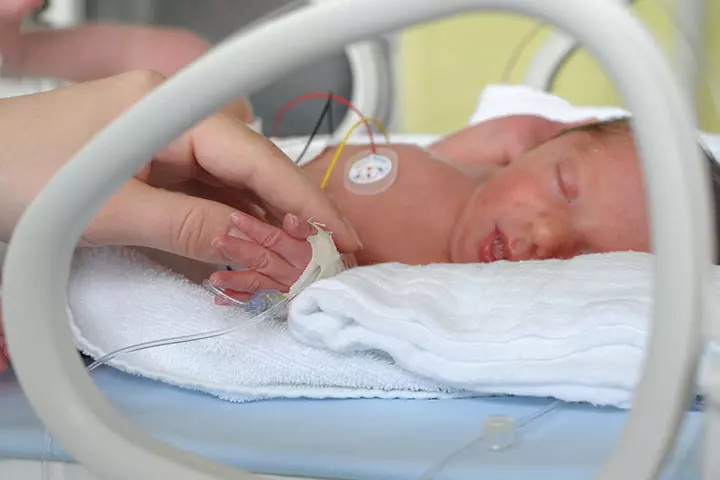
- The standard operating procedure, checklists, and other guidelines to use an incubator may vary depending on the medical institution, the purpose of incubation, the type of incubator, and the health of the baby. Monitoring of vitals is done. Therefore, discuss the specific expected outcomes of incubator use for your baby with your baby’s healthcare provider.
 Quick fact
Quick factFrequently Asked Questions
1. How long do babies stay in incubators?
The duration in incubators depends on the babies’ condition and health complications. Some may have to stay for a few hours, while others for a few days (11).
2. What is the difference between NICU and incubator?
NICU is an intensive care unit that provides specialized care to premature or sick babies. It has specially trained healthcare providers and staff members to cater to your baby’s needs. All the equipment required to treat your baby is present here.
On the other hand, an incubator is a specially designed device in the NICU that provides the right environment for your baby to grow and recover (12).
3. Can premature babies survive without an incubator?
No, it is difficult, and there is little hope for premature babies to survive without an incubator. These babies need help staying warm, being safe from infections, and maintaining their breathing levels. An incubator provides an ideal environment for these babies and supports their survival until they can be alone. It also manages their weight and body temperature (13).
4. What is the cost of an incubator for premature babies?
The cost of an incubator for premature babies can vary depending on the type and features of the device. The price range of an incubator commonly used in a neonatal intensive care unit might range from $1,500 to $35,000 (14).
5. What are the common problems associated with incubators for newborn babies?
Conditions affecting infants in the NICU include Intraventricular Haemorrhage, Periventricular Leukomalacia, Nosocomial Infection, and Pneumothorax, which can cause morbidity and mortality in premature and low-birth-weight infants (15).
6. How should I clean and maintain an incubator for my baby?
To maintain an incubator, clean it daily with mild soap and water, change it every seven days, and replace the filters every three months. Incubators requiring skin-to-skin holding should be returned to the NICU for cleaning and maintenance (7).
7. What is the success rate of an incubator?
According to California-based pediatrician Dr. Pierrette Mimi Poinsett, “Several factors influence the success rate of care, including the initial condition of the baby (such as prematurity or underlying conditions), the type of feeding and other treatments involved (such as IV or medications). It’s important to note that the success rate of an incubator is not measured alone.”
8. What are some ways to bond with my baby in an incubator?
You can gently touch your baby through the incubator ports, holding their hands and feet. Speak or sing softly since babies recognize their parent’s voices. When approved by doctors, you can also provide skin-to-skin contact. Simply being present and talking quietly near the incubator can make a difference. Once the baby is stable, many NICUs encourage parents to help with basic care tasks like changing diapers or checking the temperature. If possible, expressing breast milk is another way to feel connected, even if direct nursing isn’t yet an option (16).
While some may find the sight of an incubator for babies unnerving, this medical equipment aims to achieve success in supporting a newborn’s life in various scenarios, including when affected by respiratory infections. Incubators for babies and adults are different and are available in various types and sizes, including open, closed, double-walled, servo-controlled, and portable options. The NICU incubators are also equipped with technology that regulates temperature, humidity, and oxygen levels to aid the baby’s recovery and growth. It also seeks to establish an atmosphere for infants that is safe, snug, warm, and comparable to a mother’s womb.
Infographic: How Are Premature Babies On An Incubator Fed?
Feeding methods for premature babies may vary depending on the gestational age and digestive system. All feeding methods ensure that the baby’s nutrition and energy requirements are met. Read through the infographic to learn ways to feed babies in incubators.
Some thing wrong with infographic shortcode. please verify shortcode syntax
Illustration: Reasons Why Babies Need Incubator And How Does It Work
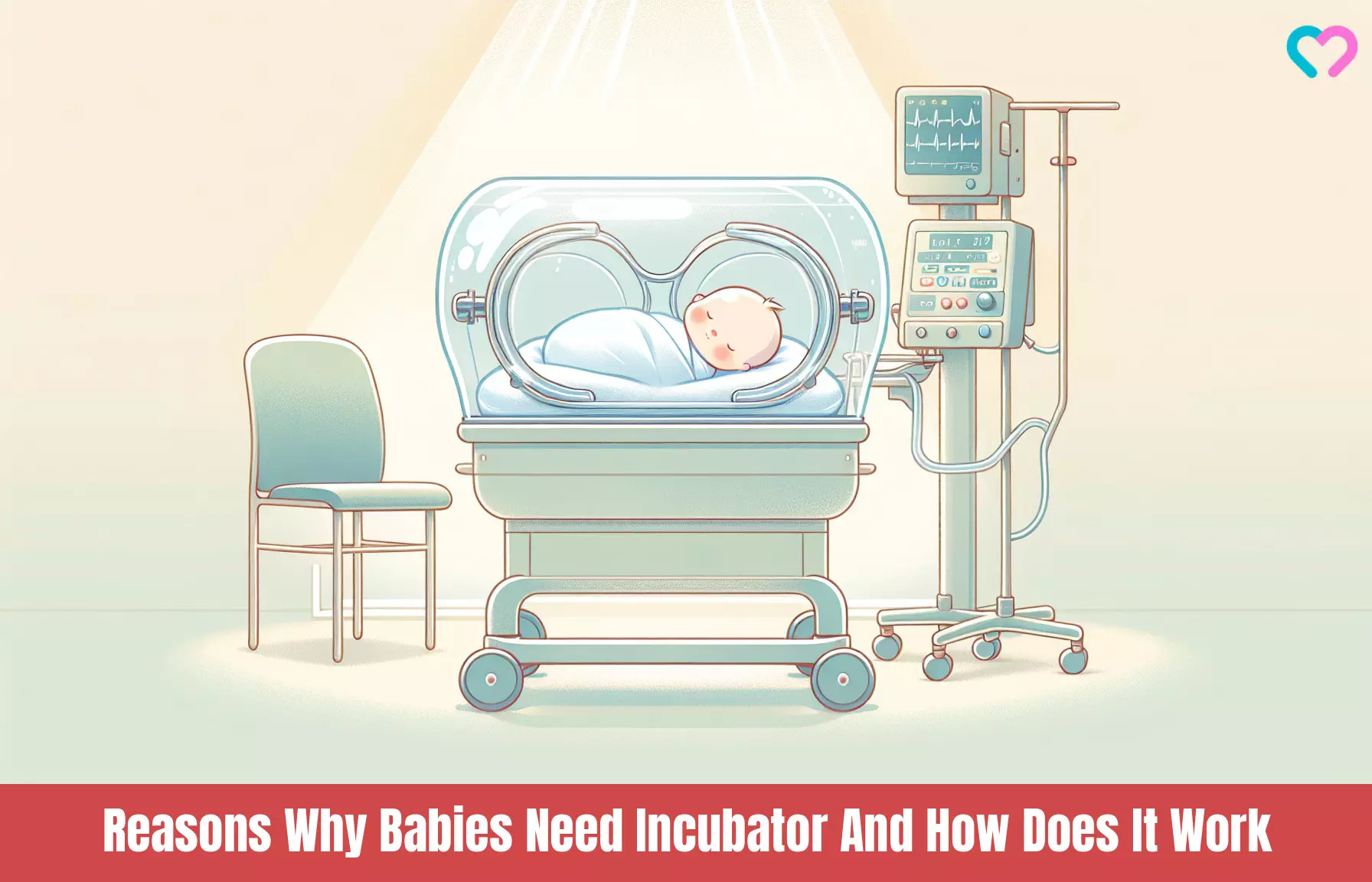
Image: Dall·E/MomJunction Design Team
Personal Experience: Source
MomJunction articles include first-hand experiences to provide you with better insights through real-life narratives. Here are the sources of personal accounts referenced in this article.
i. 25 weeks and 3 days…https://medium.com/adshill/25-weeks-and-3-days-cce4d69ac1a2
References
- Baby incubation; EBME
https://www.ebme.co.uk/articles/clinical-engineering/baby-incubation - Edward F. Bell;Servocontrol: Incubator and radiant warmer; University of Iowa Stead Family Children’s Hospital
https://uihc.org/childrens/educational-resources/temperature-nicu-handbook - Open or Closed Incubators; Archives of Disease in Childhood
https://adc.bmj.com/content/61/2/108 - Double wall versus single wall incubator for reducing heat loss in very low birth weight infants in incubators; National Library of Medicine
https://pubmed.ncbi.nlm.nih.gov/17443543/ - Servo-control for maintaining abdominal skin temperature at 36C in low birth weight infants; Cochrane
https://www.cochrane.org/CD001074/NEONATAL_servo-control-for-maintaining-abdominal-skin-temperature-at-36c-in-low-birth-weight-infants - Advanced portable preterm baby incubator; IEEE Explore
https://ieeexplore.ieee.org/abstract/document/8167522 - Incubator – care of baby in incubator; Starship
https://starship.org.nz/guidelines/incubator-care-of-baby-in-incubator/ - Caring for a Premature Baby: What Parents Need to Know; HealthyChildren; AAP
https://www.healthychildren.org/English/ages-stages/baby/preemie/Pages/Caring-For-A-Premature-Baby.aspx - Low birth weight; University of Rochester Medical Center
https://www.urmc.rochester.edu/encyclopedia/content?contenttypeid=90&contentid=p02382 - When and how to move babies from radiant warmer to incubator and from incubator to open bed; University Of Lowa Stead Family Children’s Hospital.
https://uihc.org/childrens/educational-resources/temperature-nicu-handbook - When Your Baby’s in the NICU; Nemours KidsHealth
https://kidshealth.org/en/parents/nicu-caring.html - The Newborn Intensive Care Unit (NICU); March of Dimes
https://www.marchofdimes.org/find-support/topics/nicu - Premature Babies; March of Dimes
https://www.marchofdimes.org/find-support/topics/birth/preterm-babies - Low-cost Infant Incubator Developed At UMBC Completes Successful Clinical Trial In India; University of Maryland, Baltimore County
https://umbc.edu/stories/low-cost-infant-incubator-developed-at-umbc-completes-successful-clinical-trial-in-india/ - A Survey on Neonatal Incubator Monitoring System; International Conference on Physics and Photonics Processes in Nano Sciences
https://validate.perfdrive.com/9730847aceed30627ebd520e46ee70b2/?ssa=1dea7f5d-0cc0-49d1-9307-a5bbc41243bb&ssb=06147267463&ssc=https%3A%2F%2Fiopscience.iop.org%2Farticle%2F10.1088%2F1742-6596%2F1362%2F1%2F012128%2Fpdf&ssi=4e1676e8-cnvj-40c2-99ce-bf64d1e56cc3&ssk=botmanager_support@radware.com&ssm=67014781350012003108406773018534&ssn=6fe13b87417d9506a117e3116be5336a97980122dfc5-0267-4eaa-900a71&sso=1d944f13-cd5363c21c6c68552e7e3a53f08e66fb01ef553f79c58f39&ssp=21114335381738956757173893998789723&ssq=52413053573542045107235735369072674968066&ssr=MTI0LjEyMy4xODcuMTQ1&sst=Screaming%20Frog%20SEO%20Spider/21.3&ssu=&ssv=&ssw=&ssx=eyJ1em14IjoiN2Y5MDAwNDhhNjM5Y2QtOWFiMy00YTgxLWEwNmItMDM1MGNjNmQ5MjQ4MS0xNzM4OTM1NzM1Mzk0MC1lMGNhM2Q0YWNjOWVkNzdjMTAiLCJfX3V6bWYiOiI3ZjYwMDAxOTA1YzhlNS0xMTg4LTRmODItODIzZS1iMjMxMTcyOTUyNGQxNzM4OTM1NzM1Mzk0MC02ZjllMmQ3MDE1ZjU4OThmMTAiLCJyZCI6ImlvcC5vcmcifQ== - Bonding with sick or premature babies in the NICU.
https://raisingchildren.net.au/newborns/premature-babies-sick-babies/connecting-communicating/bonding-in-the-nicu - Chorioamnionitis; Stanford Medicine
https://www.stanfordchildrens.org/en/topic/default?id=chorioamnionitis-90-P02441 - Betty Ansong-Assoku et al.; Neonatal Jaundice; NCBI
https://www.ncbi.nlm.nih.gov/books/NBK532930/ - Victoria Turnbull and Julia Petty.; Evidence-based thermal care of low birthweight neonates; Nursing Children and Young People
https://www.researchgate.net/publication/236182812_Evidence-based_thermal_care_of_low_birthweight_neonates_Part_one
Community Experiences
Join the conversation and become a part of our nurturing community! Share your stories, experiences, and insights to connect with fellow parents.
Read full bio of Dr. Mubina Agboatwalla
- Dr. Pierrette Mimi Poinsett is a licensed pediatrician and a health advocate with 19 years of experience. She completed her doctor of medicine from the University of Chicago Pritzker School of Medicine and is currently practicing as a medical consultant in California.
 Dr. Pierrette Mimi Poinsett is a licensed pediatrician and a health advocate with 19 years of experience. She completed her doctor of medicine from the University of Chicago Pritzker School of Medicine and is currently practicing as a medical consultant in California.
Dr. Pierrette Mimi Poinsett is a licensed pediatrician and a health advocate with 19 years of experience. She completed her doctor of medicine from the University of Chicago Pritzker School of Medicine and is currently practicing as a medical consultant in California.
Read full bio of Dr. Ritika Shah
Read full bio of Rohit Garoo
Read full bio of Shinta Liz Sunny








